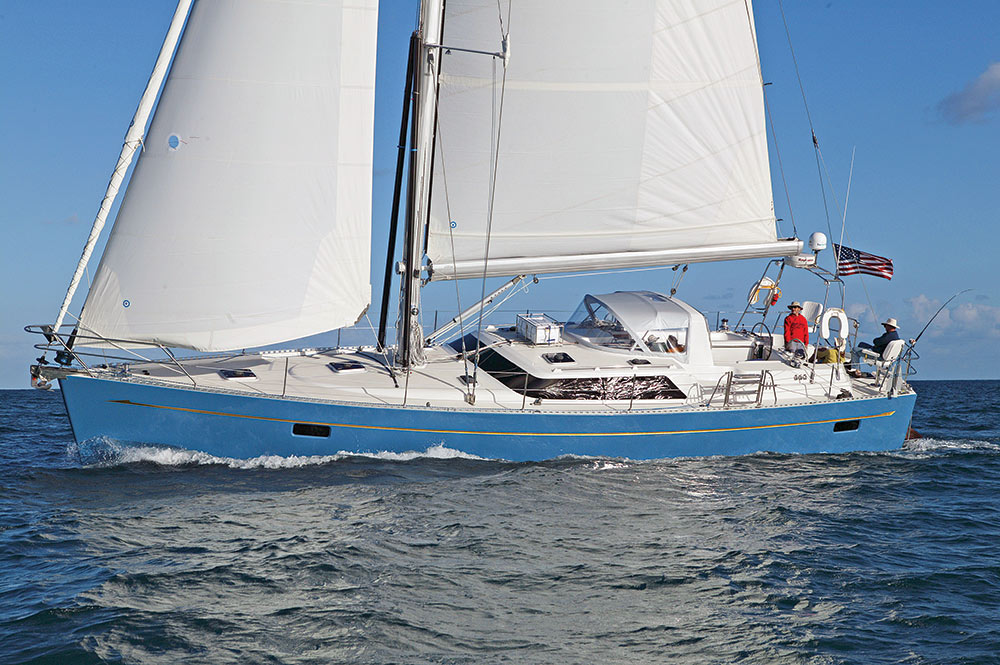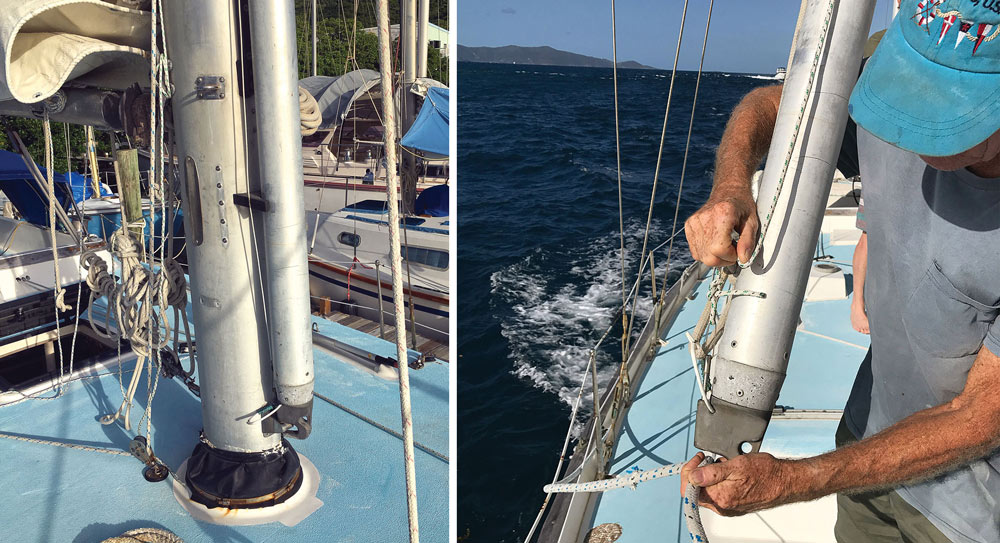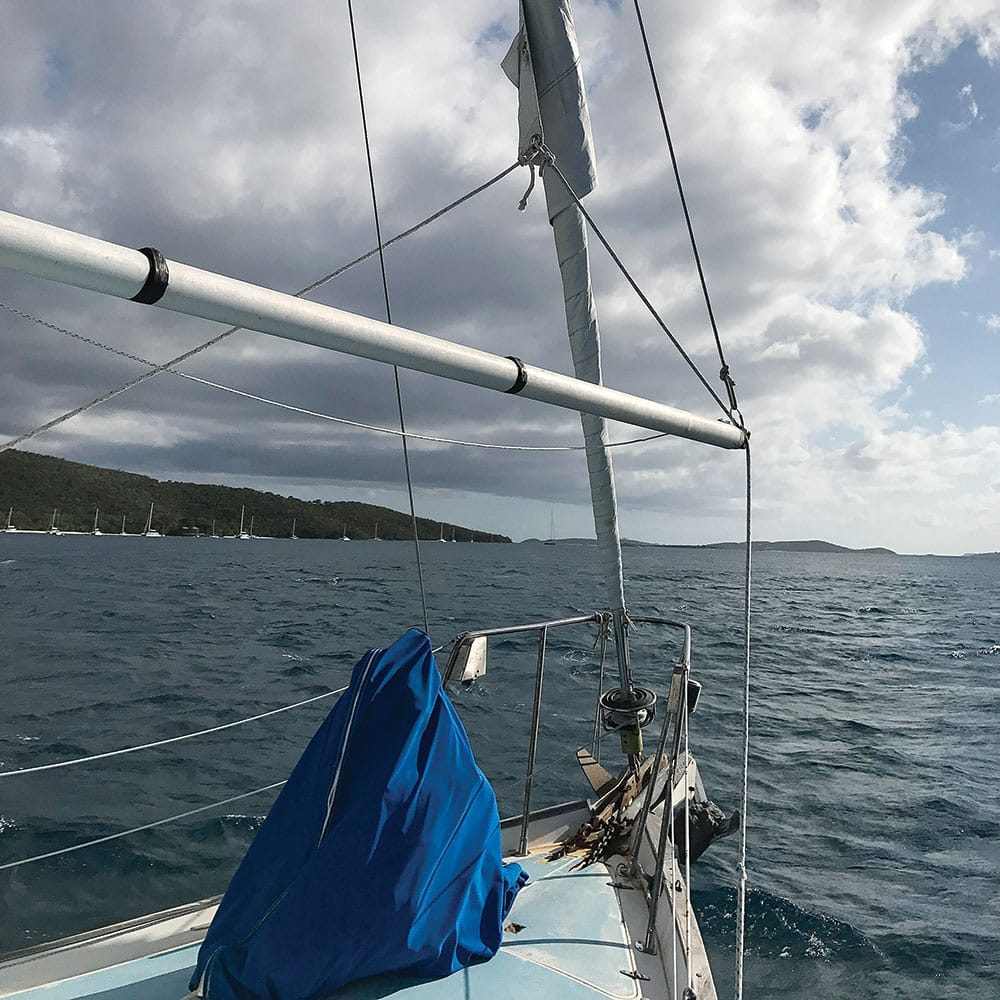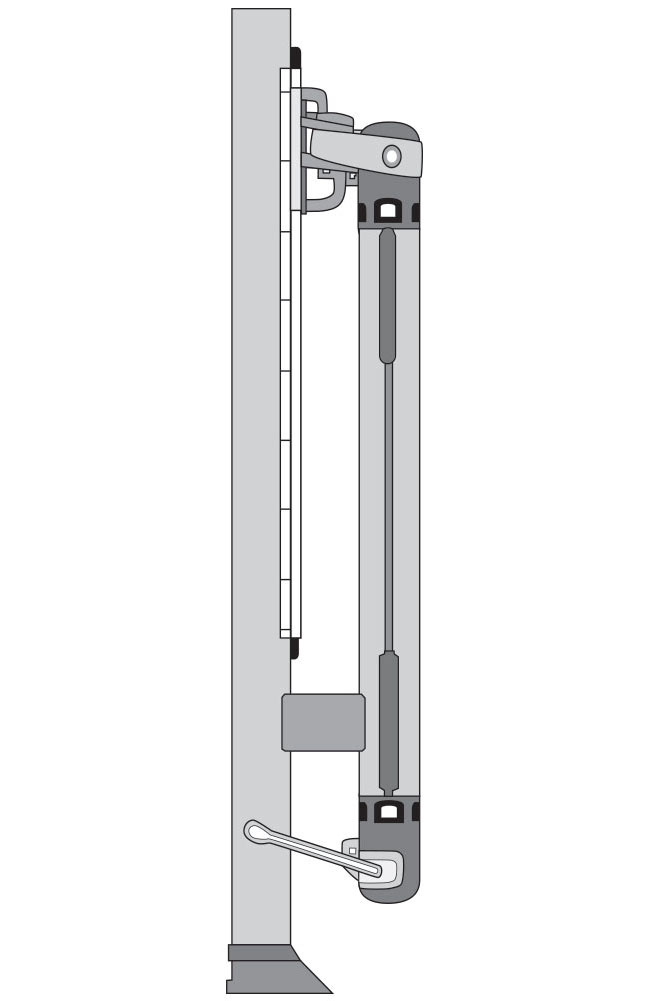
The majority of modern cruising boats do not carry spinnaker poles, in part because when sailing on the East and West coasts of the States and Canada there is seldom a dead-downwind run of hundreds of miles. Sailors feel that with the modern asymmetric spinnaker they can sail deep enough that they don’t need a spinnaker pole.
For short, dead-downwind runs, the smart skipper rigs a strong foreguy/preventer on the main boom. Then they take the windward genoa sheet out of its normal lead and run it as far aft as possible. They then sail slightly by the lee, and the genoa (or an asymmetric sheeted the same way) will fill on the opposite side from the main. This is commonly referred to as sailing wing-and-wing.
This system will work, but it requires a steady hand on the wheel and continual attention, which makes it impractical for long passages.

An asymmetric spinnaker allows a boat to sail somewhat deep, but the jibing angle still is about 90 degrees. Though the speed through the water may be fast and impressive, the velocity made good, or VMG, suffers. This was brought home to me on my 14th and final transatlantic passage. I was aboard Sincerity, a very nice 92-foot cruising ketch that sailed quite well. We had a huge asymmetric headsail but no pole. The last 1,200 miles from Cape Verde to Antigua were dead downwind. With the asymmetric, we were doing 10 to 11 knots but the jibing angle was about 90 degrees, so our VMG — our progress toward Antigua — was only 6 knots! Had we a pole so we could sail dead downwind, we probably would have been making 9 knots, right on course.
When cruising offshore, a genoa flown or winged-out on a spinnaker pole is often used more frequently than a spinnaker. The flatter the headsail is sheeted through the pole end, the less the boat will roll. Thus the pole should be about 20 percent longer than the base of the fore triangle. To stow a pole of this length on deck is difficult.
One solution is to purchase a telescoping whisker pole. My suggestion is that whatever size pole is recommended, buy one a size larger in diameter. Many firms make whisker poles. Forespar has been doing it for well over 30 years, and I’ve had good luck with them.

A better solution to stowing a long one-piece spinnaker pole (or poles) is to stow it vertically on the forward face of the mast. I have sailed with a number of boats that used this method. It works, but when lowering or hoisting the end of the pole, when it is halfway stowed, it is in a very unstable position and difficult to control.

Then, for Christmas 2015, my good friend and shipmate Geoff Curtain lent me, my wife, Trich, and our daughter, Dory, and her family his Olympic 48, Ariel, in the Virgin Islands. Dory and her husband, Scott, are both experienced America’s Cup sailors; their son, Dylan, is a very experienced bowman on hot racing boats; and their daughter, Emma Kate, is a good small-boat sailor.
When the time came to run dead downwind from Virgin Gorda to Jost Van Dyke, we discovered Ariel had an interesting, efficient and easily handled spinnaker-pole setup that was new to all of us.
The pole was stowed vertically against the mast, but its butt end was on a carriage mounted on a track on the face of the rig. Stowed, the inboard end of the pole was up by the lower spreaders; the outboard end, which gets attached to the genoa or spinnaker sheet, was on deck.
Scott disconnected the outboard end of the pole from its bracket at the base of the mast and swung it out where it just cleared the lifeline. Then, when Dylan snapped it onto the windward genoa sheet, Scott pulled the butt end of the pole down until the pole became level. The cockpit crew threw off the leeward sheet and trimmed in on the windward sheet. The genoa came across, filled, and we were off dead downwind, wing-and-wing. As the old gaff-rigged coastal cargo-carrying schooner skippers from Maine would say, “We were sailing downwind, reading both pages of the book.”
To douse the pole, the process was reversed.
We all believed Ariel‘s spinnaker pole rig was unique, but on further investigation we learned that the late Bill Stevens, of the bareboat charter company Stevens Yachts, was using this rig on the Stevens 47 as far back as the early 1980s.
Then, going through my Ocean Sailing Yacht (Volume 1, published in 1974 and still available online), I discovered a photo of Laurie Legay’s boat with two poles rigged in the same fashion. Laurie was an Australian fashion photographer who had stopped in Grenada on his circumnavigation.
My advice: If you are planning any long offshore passages, rig a pole against the mast, butt end up on a track. Swedish spar-maker Seldén sells all the bits and pieces to do this, including tubes to manufacture a pole 20 percent longer than the base of the fore triangle, which, as I said, will minimize roll.
Underway, keep the main boom on one side, vanged down tight and well secured with a preventer, or foreguy, running from the end of boom to a block at or near the stem, and thence back to a winch in the cockpit. Set the preventer up tight, making it impossible to have an inadvertent jibe. Then fly the genoa on the pole to windward, using your fast, safe trade-wind passage rig.
Don Street, now in his 80s, literally wrote the book on Caribbean sailing and is a frequent CW contributor.








